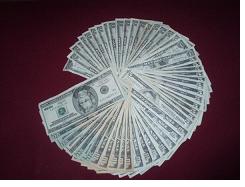 As we continue our look at the history of money and how we arrived at the monetary system we have today, let’s go back to 1944 and the Bretton Woods Conference. This was a gathering of 730 delegates from all 44 allied nations who gathered together in Bretton Woods, New Hampshire, to discuss finance. The goal was to find a way to regulate international trade. The American dollar became kind of the cool kid on the block – it was a means to measure everything else taking place in the world.
As we continue our look at the history of money and how we arrived at the monetary system we have today, let’s go back to 1944 and the Bretton Woods Conference. This was a gathering of 730 delegates from all 44 allied nations who gathered together in Bretton Woods, New Hampshire, to discuss finance. The goal was to find a way to regulate international trade. The American dollar became kind of the cool kid on the block – it was a means to measure everything else taking place in the world.
The rules and regulations discussed at the conference really came into play in 1959, when European money became convertible. At this time, the World Bank began to take a larger role, and fiat money really became more widely used.
And what is fiat money? Broken down to its simplest definition, fiat money has no worth of its own. It is only worth as much as we are told it’s worth. I can hand you an apple and say, “That is worth a dollar,” and you can trade it to someone for a dollar. But if we hear that apples are suddenly worth fifty cents, that is all they are worth. This is unlike gold, which has inherent worth, but even with gold, you’ve got to be able to find a buyer who will pay you what it’s worth. Our paper money is fiat money. How much is the slip of paper really worth? I imagine it only cost a few cents to produce, even those bills that have $500 printed on them. They have worth because we are told they have worth. By themselves, they are mere slips of paper.
This is why the gold standard is so important. We need to have gold in our vaults to back up every scrap of green paper we have floating around. However, if the gold mines can’t produce quickly enough to keep up with the demand, we’ve got a bit of a situation, and that is why our monetary systems today are based on fiat and not on the gold standard. It’s a little bit discomfiting to think that our money is only worth what we are told it’s worth. We’ll take more of a look at this in future blogs.
Related Blogs:
The History of Money, Part One – Barter
The History of Money, Part Two – Money Makes an Appearance

